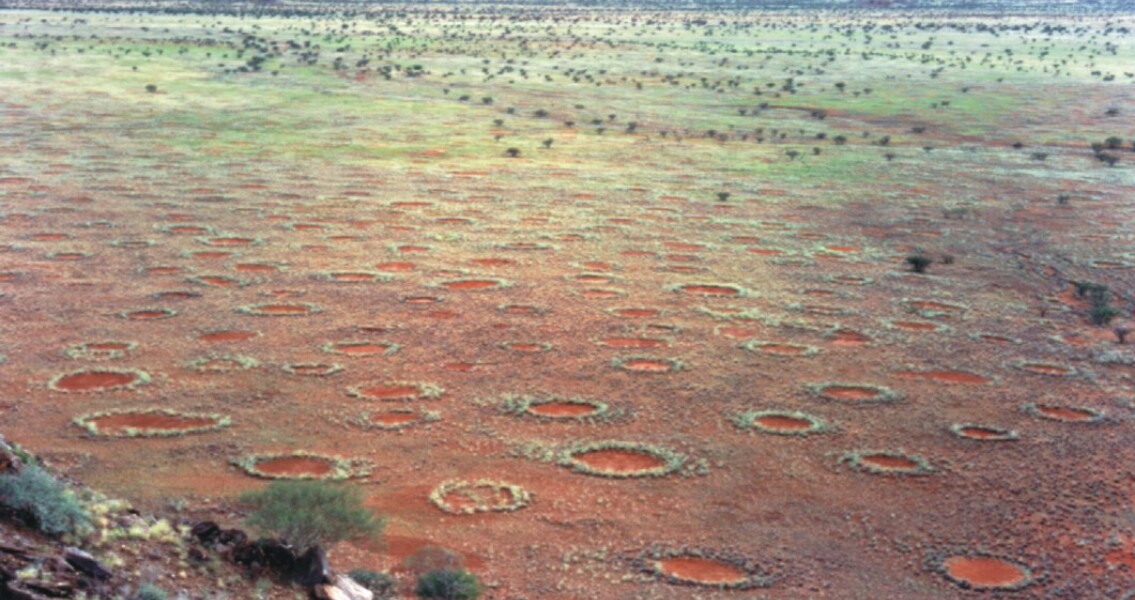<![CDATA[How the perfectly round patches of bare ground dotting the Namib desert landscape in southern Africa were created has long been a subject of debate. Inside the formations, between six and 100 feet in diameter, there is absolutely no vegetation, unlike the thickly vegetated fields that surround them. With no scientific explanation available, locals have credited otherworldly powers for the "fairy circles'" creation. In oral myths of the Himba people these barren areas are said to have been created by the gods. Specifically, that they’re the footprints left behind by Muruku, the Himba’s original ancestor. Another myth commonly promoted by tour guides is that the circles are caused by an underground dragon, whose poisonous breath destroys the vegetation. The circles are also recognized internationally and have been dubbed a UFO hot spot. Now, ecologists from Princeton University, utilizing computer simulations, have proposed a solution to the problem of how the fairy circles were created. According to the study, the complex interaction of competing and cooperating plants and animals, what one researcher describes as a "simple and elegant geometry on such enormous scale." may likely explain the unusual pattern of bald spots. To date, two competing explanations have been presented: either termites were responsible for the spots or the plants surrounding them were the culprits. The theory Corina Tarnita, the lead author, and her team have suggested is a combination of the two. The giant circular areas are primarily the result of termites working in cooperation within their colony, while simultaneously competing with neighboring colonies. Additionally, the study explains that the unique patterns found in between the circles are caused by plants with root systems designed for an environment with limited water. “Out of all these processes, where each is doing what they need to, emerges this large scale pattern," Tarnita is quoted as saying on Phys Org. The circles occur in a stretch of land approximately 100 miles (160 km) inland and extend southward for around 1,500 miles (2,400 km) to South Africa’s Northwestern Cape. For the most part, it’s a remote and unwelcoming region, a hundred miles from the closest village. The Namib, a coastal desert, stretches for over 1,200 miles (2,000 km) along the coasts of Namibia, Angola, and South Africa. With an annual precipitation rate between 2 mm (0.079 in) in the driest regions to 200 mm (7.9 in), the Namib, possibly the oldest desert on the globe, has endured these dry conditions for approximately 55 to 80 million years. A number of experts have expressed doubts about the study’s conclusion based on assumptions made by the team in regard to rainfall averages and the lifespans of termite colonies. Originally believed to occur only in Africa, in 2016 researchers in Australia confirmed finding the first example of this strange phenomenon on that continent. The study has been published in the journal Nature. ]]>
Termites, not a God, Created Africa’s Fairy Circles
